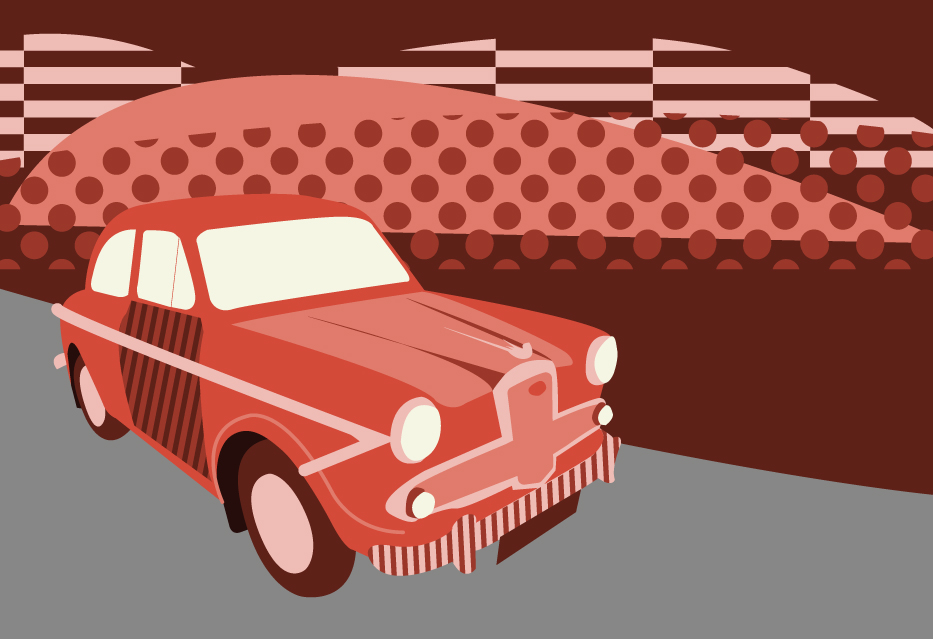Love the look of the 60s Porsche 911 but can’t stretch to the exorbitant prices? Then you’re in luck, as the entry model 912 looks virtually identical, but sells for a fraction of the price. So it only churns out 90bhp, but a contemporary MGB produced 95 and was still slower to 60mph by half a second – and both these cars are more about style than raw speed.
We take a look at the car that helped Porsche establish the 911 as the iconic sportscar that’s still going strong half a century later.
The Porsche 911, based on sketches drawn by Ferdinand Porsche in 1959, was introduced in 1963 as an eventual replacement for the now almost equally iconic 356.
The new car was powered by a six-cyclinder 1991cc engine, replacing the four-cylinder unit in the 356, but Porsche was worried that the significant price hike from the 356 to the new car would deter some buyers, and cripple dealers up against stiff competition from cheaper rivals, among them the E-Type Jaguar.
Demand remained strong for a cheaper, entry-level four-cylinder model – and so the 912 was born, taking the 356’s 1582cc engine and its place in the market in 1965.
The result was a car that had the sensational looks and sharp-handling characteristics of the 911 but with a little less zip.

However, now that these cars are pushing 50 years old, sheer speed should be of less concern to classic car owners – who wants to thrash the life out of a piece of appreciating automotive history?
The fact that the 912 outsold the 911 when it was launched was testament to Porsche’s strategy, and helped to cement the more powerful car’s place in the sportscar market.
What’s more, the 912 may have been slower off the mark, but it boasted superior weight distribution and handling compared with its big brother. And it could still hit 119mph if necessary.
Some 911 features were missing to keep costs down, with standard 911 fare like the famous five dashboard dials, wood-rimmed steering wheel and five-speed gearbox optional extras.
Like our illustration of the Porsche 912 at the beginning of the article?
Download a free high-quality poster version here.
At its launch, American racer Mark Donohue, winner of the Indianapolis 500 and renowned for setting up his own cars as well as driving them, said: “You’ve got to admire them for getting so much out of a relatively small engine, even the 912—although I was most impressed with the handling. The cars have remarkable suspension systems.”
By 1966, the 912 was outselling the top of the range 911 by two to one, keeping dealers and buyers happy and helping to cement the 911 design in the public’s consciousness.
Their increased comfort, superior handling and double the interior space over the outgoing 356 was available for only an extra £60 or so.

Buyers considered the 912 to have the best of both worlds – the style and mechanics of the 911, a great sounding flat-four engine, with better handling and fuel economy, albeit with a little less pace.
A Targa was introduced in 1966, featuring a removable roof, initially with openable plastic rear windows operated by a zipper, replaced by fixed glass windows in 1968.

During its five-year production run, the 912 enjoyed a successful motorsport career and also doubled up as a police car, with the 100,000th Porsche off the production lines, a modified Targa, delivered to the German autobahn police.
Meanwhile, the 912 was busy proving itself in competition, with Polish driver Sobieslaw Zasada winning the European Rally Championship for touring cars in 1967 in a factory-loaned car, also taking the Rally of Poland in the same year. The car still competes well in modern classic rallies and track events.
Adrian Flux Classic Car Insurance
In all, Porsche sold more than 32,000 coupe and Targa 912s between 1965 and 1969 before it was replaced by the joint VW-Porsche 914 as the new entry-level Porsche. The 912 would also have struggled to comply with new US emissions rules.
However, that wasn’t to be the end of the 912 name. Although it sold more than 118,000 914s, the model is fairly unloved today, and it was discontinued in 1976.
The 912 name was restored in 1975 in the US as the entry-level 912E, sharing the 911S body and powered by an 86bhp 2-litre VW air-cooled engine.

But this was only really a stop-gap measure while the new 924, another joint production between Porsche and VW, was in the final stages of development.
The 924 was a modern-looking, front engined sportscar and helped rescue the company from financial difficulties, selling more than 150,000 models between 1976 and 1988 and allowing the company to continue to develop the flagship 911.
More than 2,000 912Es were sold in its two years of production before the number was finally consigned to history.
Back to the modern day, and with prices of early 911s now out of reach for many, the 912 is the only realistic option for those looking for an early car for less than £30,000.
An equivalent 911 will cost at least double that and, apart from the bigger engine and a few bits of interior trim, there is very little difference between the two cars.
And with 911 prices still rising, expect the 912 to start to rise as well in the next few years. So if you want one, buy it soon…
Insurance from Adrian Flux
Get competitive classic car insurance for the Porsche 912 with Adrian Flux.
Features can include:
- Agreed value
- Limited mileage discounts
- Owners club discount
- Laid up cover
- Wedding hire cover






